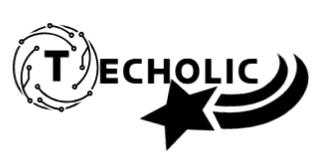In today’s fast-paced digital world, speed isn’t just an advantage—it’s survival. Whether you’re scrolling through a shopping site, streaming a show, or working in a cloud app, you expect everything to move instantly. This is where laaster comes in. The term laaster, though relatively new, represents a forward-thinking approach to building ultra-responsive, scalable, and intelligent digital systems that can adapt to modern demands.
More than just a buzzword, laaster embodies an evolving philosophy in software architecture—a mindset that puts speed, efficiency, and adaptability at its core. Businesses adopting laaster principles aren’t just keeping up with technology—they’re staying several steps ahead.
What Exactly Is Laaster?
At its simplest, laaster refers to digital systems or architectures designed for low latency and high responsiveness. Derived from a mix of terms meaning “faster” or “smarter” in various tech communities, laaster is about more than raw speed—it’s about delivering experiences that feel natural, fluid, and effortless.
A laaster-based system minimizes lag between user actions and results. Think of it as an invisible accelerator inside your digital environment—whether it’s a web app, AI-powered service, or real-time communication platform. It ensures that everything runs smoothly, regardless of the complexity happening behind the scenes.
In short, laaster is both a performance philosophy and a technical strategy that blends rapid response with intelligent adaptability.
Why Laaster Matters in 2025
The digital ecosystem of 2025 is more demanding than ever. With users expecting instant results, businesses can’t afford even a one-second delay. Studies show that over 50% of users abandon websites that take more than three seconds to load. That’s a staggering number—and one that emphasizes why laaster is no longer optional.
Here’s why laaster is critical today:
-
User Expectations Have Changed: People demand immediacy. A delay of even milliseconds can feel frustrating.
-
Data Volumes Are Exploding: From AI analytics to cloud services, data loads are heavier than ever, requiring smarter handling.
-
Global Connectivity Requires Speed: Systems must adapt to users accessing data from anywhere in the world.
-
Competition Is Ruthless: Faster experiences directly correlate with higher engagement and retention.
-
Technology Is Evolving Rapidly: From 5G to edge computing, laaster-ready systems can seamlessly adapt to technological shifts.
In essence, laaster ensures that your digital presence isn’t just functioning—it’s thriving in real time.
Core Principles of Laaster
Every laaster-driven system is built upon several foundational principles that keep it running quickly and intelligently. Understanding these helps explain why laaster has become such a game changer.
1. Ultra-Low Latency
Laaster systems are designed to reduce lag to the bare minimum. Through optimized infrastructure, data caching, and parallel processing, they deliver real-time results with no noticeable delay.
2. Elastic Scalability
Unlike traditional systems that can crash under heavy load, laaster-based architectures automatically scale up or down as needed. This means smooth performance—even during sudden traffic spikes.
3. Intelligent Routing
Laaster introduces smarter data routing. Instead of following static paths, information travels along the fastest and most efficient route, improving performance while saving bandwidth.
4. Adaptive Functionality
A hallmark of laaster is adaptability. Systems modify behavior based on user context—device type, location, or network strength—to deliver the best possible experience.
5. Resilient Security
As systems get faster, maintaining security becomes crucial. Laaster approaches integrate encryption, monitoring, and real-time threat detection without compromising speed.
6. Seamless User Experience
The ultimate goal of laaster isn’t just technical efficiency—it’s human satisfaction. When apps respond instantly and interfaces feel effortless, users stay engaged.
How Laaster Works in Practice
Imagine a video-streaming platform. Without laaster, it might struggle when thousands of users start watching simultaneously, causing buffering or crashes. With laaster principles in play, the platform intelligently balances resources, routes data efficiently, and scales automatically to maintain uninterrupted playback.
Here’s how it functions behind the scenes:
-
Smart Data Flow: Requests are distributed through optimized routes for minimum delay.
-
Edge Computing Integration: Processing happens closer to users, reducing distance and lag.
-
Auto-Scaling Infrastructure: Resources expand dynamically when traffic surges.
-
Real-Time Monitoring: Systems constantly assess performance, making adjustments instantly.
-
Feedback Loops: Data from usage patterns improves efficiency for future sessions.
-
Security Layers: Each request is verified, encrypted, and safely transmitted without slowing down operations.
The outcome? A digital system that feels instant, stable, and remarkably responsive—even under stress.
Industries Benefiting from Laaster
The potential applications for laaster are vast. Virtually every industry that depends on real-time data or digital experiences can benefit:
-
E-commerce: Faster checkout, smoother product browsing, and instant payment confirmations.
-
Gaming: Real-time multiplayer experiences without lag or disconnects.
-
Finance: Lightning-fast transactions and live market data updates.
-
Healthcare: Remote monitoring and telemedicine systems functioning with zero delay.
-
Streaming Services: Buffer-free content delivery, even during peak hours.
-
IoT (Internet of Things): Devices communicate instantly, improving automation and analytics.
-
Education: Interactive learning tools and virtual classrooms with real-time feedback.
In short, any domain that values time, accuracy, and user satisfaction can leverage laaster to elevate performance.
Advantages of Implementing Laaster
Choosing to implement laaster is an investment in both performance and user loyalty. Here’s why:
-
Superior User Retention: Faster systems build trust and encourage repeat visits.
-
Higher Conversion Rates: Users are more likely to complete purchases or sign-ups when experiences are instant.
-
Reduced Downtime: Auto-scaling and self-healing features minimize disruptions.
-
Operational Efficiency: Smart routing and adaptive scaling reduce unnecessary costs.
-
Future-Ready Infrastructure: Laaster systems evolve easily as technology advances.
-
Improved SEO: Google favors faster-loading websites and responsive applications.
Ultimately, laaster turns performance into a competitive advantage.
Challenges of Adopting Laaster
While laaster offers impressive benefits, it’s not without challenges:
-
High Initial Investment: Building laaster-ready infrastructure may require advanced technology and expertise.
-
Complex Integration: Existing legacy systems can be difficult to optimize for laaster.
-
Maintenance Demands: Continuous monitoring and updates are necessary to sustain performance.
-
Security Risks: Faster data transfer means stricter protection against potential breaches.
-
Skilled Workforce: Teams must understand both infrastructure and adaptive system design.
Despite these challenges, the long-term returns of adopting laaster—greater speed, reliability, and scalability—far outweigh the costs.
The Future of Laaster
The coming years will see laaster evolve from a niche concept into a mainstream standard. As AI, machine learning, and edge computing merge, laaster systems will become even more dynamic and autonomous.
Predicted future trends include:
-
AI-Driven Optimization: Systems that learn from behavior to auto-tune performance.
-
Decentralized Architectures: Cloud and edge networks cooperating in real time.
-
Sustainable Speed: Energy-efficient servers delivering faster results with smaller carbon footprints.
-
Global Adaptability: Platforms optimized for multilingual, multi-region users.
-
User-Defined Experiences: Custom performance settings based on individual needs.
As digital expectations rise, laaster’s principles—speed, intelligence, and adaptability—will define how future systems are built.
How to Adopt Laaster for Your Business
Implementing laaster doesn’t happen overnight. It’s a strategic process requiring planning and gradual optimization. Here’s how to begin:
-
Audit Your Current System: Identify slow points and latency bottlenecks.
-
Define Clear Goals: Set performance benchmarks aligned with user expectations.
-
Upgrade Infrastructure: Move toward cloud-native, scalable solutions.
-
Integrate Edge Computing: Bring processing closer to the user.
-
Automate Monitoring: Use real-time analytics to track performance continuously.
-
Optimize UX: Ensure front-end design complements back-end speed.
-
Train Teams: Educate developers on laaster principles and adaptive systems.
-
Test and Iterate: Continuously improve through real user feedback.
By following these steps, businesses can gradually evolve toward a laaster-based digital ecosystem that delivers consistent, high-speed performance.
Ethical and Environmental Aspects of Laaster
As laaster accelerates technology, it also raises important ethical and environmental considerations. Speed must never compromise fairness, privacy, or sustainability.
Ethically, companies adopting laaster should prioritize user data protection, transparent algorithms, and inclusive design so that performance benefits everyone equally.
From an environmental standpoint, laaster can contribute positively if implemented thoughtfully. Efficient data routing, smart caching, and server optimization can significantly reduce energy waste—making laaster not just fast, but eco-conscious.
Laaster as a Mindset
Perhaps the most powerful part of laaster is not the technology—but the mindset it represents. It’s about striving for continuous improvement, embracing change, and designing experiences that feel effortless to users.
A laaster mindset means:
-
Choosing progress over complacency.
-
Building systems that adapt, not just react.
-
Treating speed as an expression of respect for the user’s time.
-
Seeing technology as a bridge—not a barrier—to connection.
By thinking like this, organizations can unlock a culture of innovation that extends far beyond their tech stack.
Conclusion
The age of laaster is here—and it’s redefining what “fast” truly means. It’s not just about loading times or server speeds anymore; it’s about creating ecosystems that respond, adapt, and evolve in real time.
Businesses that embrace laaster now will lead tomorrow’s digital frontier. They’ll deliver experiences so seamless that users barely notice the technology—only the results.
So whether you’re developing apps, managing data, or crafting online experiences, remember this: laaster is the key to lasting speed, smarter systems, and a future where technology finally keeps up with human expectation.

